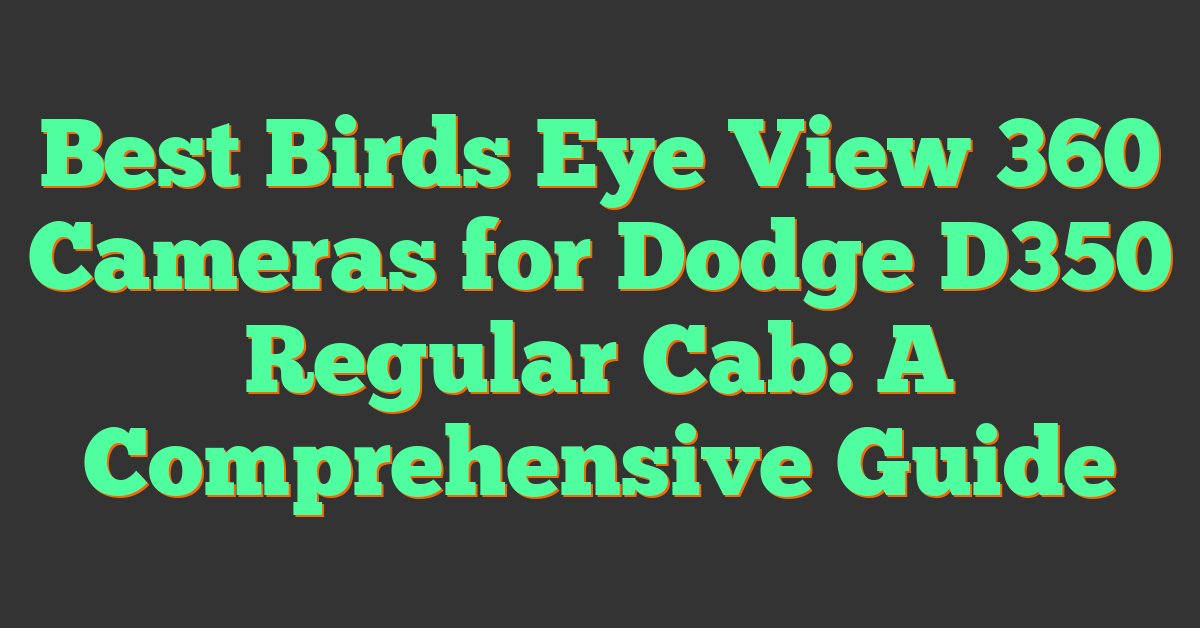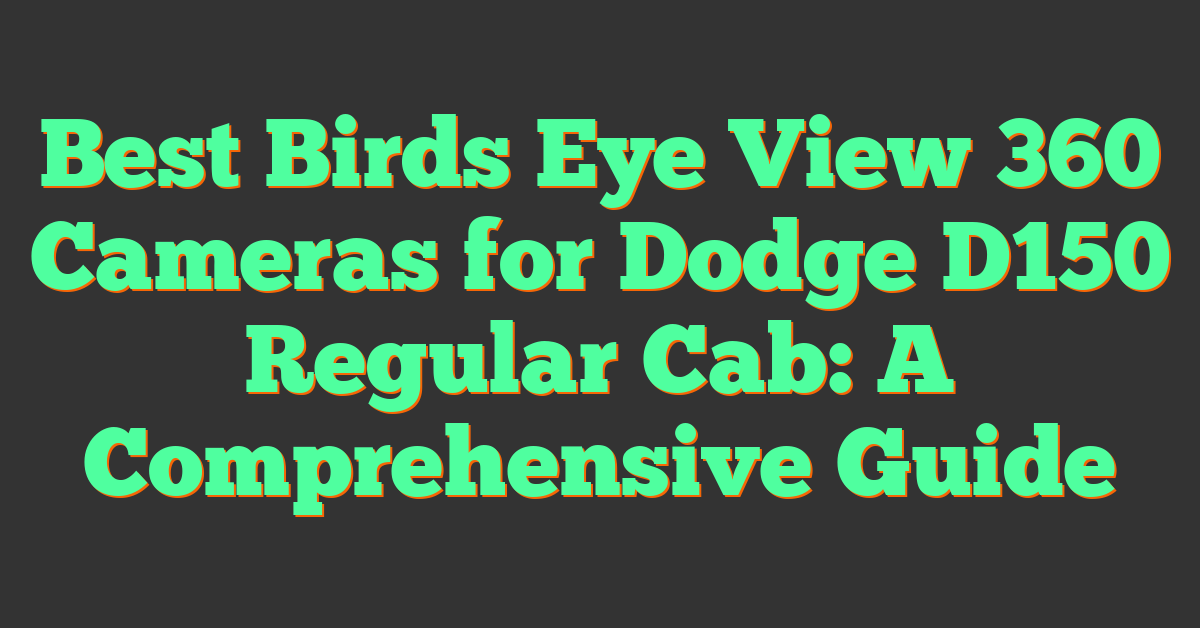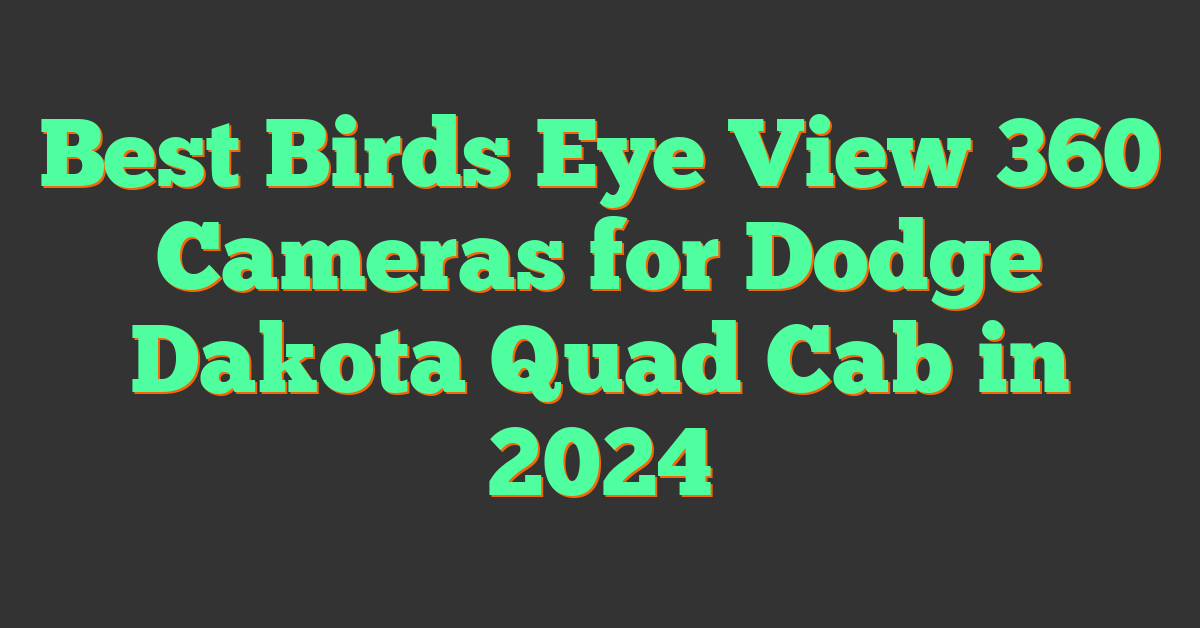If you’re looking to capture immersive experiences in a way that’s never been possible before, a 360 camera might be just what you need. These devices are equipped with multiple lenses that can capture a full 360-degree view of your surroundings, allowing you to create stunning photos and videos that truly transport your viewers to another world. But what are 360 cameras used for, exactly?

There are countless applications for 360 cameras, from capturing breathtaking landscapes to documenting extreme sports and everything in between. With a 360 camera, you can create fully immersive experiences that make your viewers feel like they’re really there. Whether you’re looking to create virtual tours of a property, capture the action at a live event, or simply create stunning photos and videos to share with your friends and family, a 360 camera can help you achieve your goals.
So if you’re ready to take your photography and videography to the next level, it might be time to invest in a 360 camera. With so many different models and applications to choose from, there’s never been a better time to start exploring this exciting new technology.
Key Takeaways
- 360 cameras are used to capture immersive experiences that transport viewers to another world.
- These devices are equipped with multiple lenses that can capture a full 360-degree view of your surroundings.
- With a 360 camera, you can create virtual tours, document extreme sports, and capture stunning photos and videos to share with others.
Understanding 360 Cameras
https://www.youtube.com/watch?v=WtAiEeZiYfs&embed=true
If you’re new to 360 cameras, it’s important to know what they are and how they differ from traditional cameras. Here, we’ll break down the key features of 360 cameras and compare them to traditional cameras.
Key Features of 360 Cameras
360 cameras are designed to capture a 360-degree view of the world around you. They use multiple lenses to capture images and videos in all directions, which are then stitched together to create a seamless 360-degree image or video. This means that you can capture everything around you in a single shot, without having to move the camera or take multiple shots.
One of the key features of 360 cameras is their ability to capture immersive content. This means that viewers can look around the entire scene, as if they were actually there. This makes 360 cameras ideal for capturing events, travel experiences, and other immersive content.
Another important feature of 360 cameras is their ability to capture high-resolution images and videos. Many 360 cameras offer 4K or even 8K resolution, which means that the final image or video is incredibly detailed and sharp.
Comparison with Traditional Cameras
One of the main differences between 360 cameras and traditional cameras is the way they capture images. Traditional cameras capture images in a single frame, while 360 cameras capture multiple frames from different angles and stitch them together to create a 360-degree image.
Another key difference is the way the cameras are designed. Traditional cameras are typically designed to be handheld, while 360 cameras are often designed to be mounted on a tripod or other stabilizing device. This is because any movement of the camera can cause distortion in the final image or video.
Finally, 360 cameras often come with built-in image stabilization, which helps to reduce camera shake and ensure that the final image or video is smooth and steady. This is particularly important when capturing video, as any movement or shaking can be very noticeable in the final product.
Overall, 360 cameras are a powerful tool for capturing immersive, high-resolution content. Whether you’re a professional photographer or just looking to capture your travels in a unique way, a 360 camera can help you create stunning, immersive content that will transport your viewers to another world.
Popular 360 Camera Models
« What Does a 360 Camera Do? Your Guide to Capturing Immersive Moments
Compact SUV with 360 Camera: The Ultimate Guide for Car Shoppers in India »

If you’re looking to get into the world of 360 cameras, there are several popular models to choose from. Here are some of the most popular 360 camera models on the market today:
GoPro Models
GoPro is a well-known brand in the action camera world, and they have several 360 camera models available. The GoPro Max is their latest model, and it offers 360-degree video and photo capture, as well as traditional wide-angle capture. It also has built-in stabilization, making it a great option for capturing smooth footage while on the move.
Insta360 Cameras
Insta360 is another popular brand in the 360 camera world, and they have several models to choose from. The Insta360 ONE R is a modular camera that allows you to swap out different lenses and modules to customize your setup. The Insta360 X3 is another popular model, offering 5.7K video and 9MP photos in a compact design.
Ricoh Cameras
Ricoh is a well-respected brand in the camera world, and they have several 360 camera models available. The Ricoh Theta Z1 is their latest model, offering 23MP resolution and 4K video capture. It also has a sleek design and is easy to use, making it a great option for beginners.
Overall, these are just a few of the many popular 360 camera models available on the market today. When choosing a 360 camera, consider factors such as resolution, video and photo quality, ease of use, and price. With so many options available, you’re sure to find a 360 camera that fits your needs and budget.
360 Photography and Videography
https://www.youtube.com/watch?v=RHejHmUZR_U&embed=true
If you’re interested in capturing immersive 360 photos and videos, a 360 camera is the perfect tool for you. These cameras are designed to capture a full 360-degree view of your surroundings, allowing you to create unique and interactive content.
Capturing 360 Photos
Taking 360 photos is a fun and engaging way to capture your environment. With a 360 camera, you can take photos that capture everything around you, giving your viewers a complete field of view. You can use these photos to create virtual tours, share on social media, or even print out as panoramic images.
When taking 360 photos, it’s important to keep in mind that the camera is capturing everything around you, including yourself. So, make sure you’re not in the shot or use a tripod to hold the camera while you step out of the frame.
Shooting 360 Videos
360-degree footage is a great way to capture immersive video content. With a 360 camera, you can record everything around you, giving your viewers a complete view of your environment. You can use this footage to create virtual reality experiences, share on social media, or even use in your own video projects.
When shooting 360 videos, it’s important to keep in mind that the camera is capturing everything around you, so make sure you’re aware of your surroundings. You can also use a tripod to hold the camera while you step out of the frame.
Overall, a 360 camera is a great tool for capturing immersive photos and videos. Whether you’re a professional photographer or just looking to capture unique content, a 360 camera can help you take your photography and videography to the next level.
Creative Applications of 360 Cameras
https://www.youtube.com/watch?v=RXZKH8GFwyw&embed=true
360 cameras have opened up a world of creative possibilities for both professional and amateur photographers. They allow you to capture immersive, 360-degree images and videos, which can be used for a wide range of creative applications. Here are some of the most popular creative applications of 360 cameras:
Virtual Tours
360 cameras are perfect for creating virtual tours of real estate properties, museums, and other locations. With a 360 camera, you can capture every angle of a space and create a fully immersive virtual tour that allows viewers to experience the space as if they were there in person. Virtual tours are a great way to showcase properties to potential buyers or give people a taste of what it’s like to visit a museum or other location.
Action Videos
360 cameras are also great for capturing action videos. They can be used to create immersive videos of extreme sports such as skiing, snowboarding, surfing, and more. With a 360 camera, you can capture every angle of the action, allowing viewers to experience the thrill of the sport as if they were there in person. Action cameras like GoPro are often used for this purpose, but 360 cameras offer a more immersive experience.
Whether you’re a professional photographer or just a hobbyist, a 360 camera can be a great tool for creating unique and immersive content. With the ability to capture 360-degree images and videos, you can create virtual tours, action videos, and other types of VR content that will captivate your audience.
Using 360 Cameras in Extreme Conditions
https://www.youtube.com/watch?v=nc6A1gpxY30&embed=true
If you’re an adventure enthusiast, you know the importance of having a camera that can withstand harsh conditions. A 360 camera can be the perfect tool for capturing your extreme adventures. Here are some ways you can use 360 cameras in extreme conditions.
Waterproof and Durable Designs
Many 360 cameras come with waterproof and durable designs that can withstand water, dust, and shock. This makes them perfect for capturing footage during water sports such as surfing, snorkeling, and diving. For example, the GoPro MAX is a 360 camera that is waterproof up to 16 feet and has a rugged design that can withstand drops and bumps.
Adventure Sports Filming
360 cameras are perfect for filming adventure sports such as skiing, snowboarding, and mountain biking. Their wide-angle lenses can capture the entire scene, allowing you to relive your experience in immersive detail. Some 360 cameras, such as the Insta360 ONE R, have a modular design that allows you to switch between different lenses and accessories to suit your needs.
In conclusion, 360 cameras are versatile tools that can be used in a variety of extreme conditions. Whether you’re exploring the depths of the ocean or shredding down a mountain, a 360 camera can help you capture your adventures in stunning detail.
Editing and Post-Processing
https://www.youtube.com/watch?v=uUiQQzhwzFY&embed=true
After capturing your 360-degree footage, the next step is to edit and post-process it to create a final product. In this section, we’ll cover the two main aspects of editing and post-processing: stitching and software, and advanced editing techniques.
Stitching and Software
Stitching is the process of combining multiple images or videos into a single 360-degree video. Most 360 cameras come with their own stitching software, but there are also third-party options available. One popular software for stitching 360 videos is Autopano Video from Kolor, a subsidiary of the GoPro family.
Once you’ve stitched your footage, you can move on to post-processing. Adobe Premiere Pro is a popular editing software that supports 360-degree video editing. It allows you to crop, adjust color, and add effects to your footage. You can also use the overcapture feature to create a traditional flat video from your 360 footage.
Advanced Editing Techniques
If you’re looking to take your 360-degree editing to the next level, there are several advanced techniques you can use. One technique is to add text and graphics to your footage using Adobe After Effects. This allows you to create immersive experiences for your viewers.
Another technique is to use virtual reality (VR) headsets to edit your footage. This allows you to see your footage as it will appear to your viewers and make adjustments accordingly.
In summary, editing and post-processing are essential steps in creating a final product from your 360-degree footage. Stitching software like Autopano Video can help you combine multiple images or videos into a single 360-degree video. Adobe Premiere Pro and After Effects are popular editing software that supports 360-degree video editing. By using advanced editing techniques like adding text and graphics or using VR headsets, you can create immersive experiences for your viewers.
Sharing and Viewing 360 Content
https://www.youtube.com/watch?v=T9qslAaN8Vs&embed=true
360 cameras are all about capturing immersive content that you can view from any angle. But what good is that content if you can’t share it with others? Luckily, there are many ways to share and view 360 content.
Social Media Platforms
Social media platforms like Facebook, YouTube, and Instagram are great places to share your 360 photos and videos. These platforms allow you to upload 360 content just like you would with any other photo or video. Once uploaded, your viewers can pan around the image or video to see everything that was captured.
Facebook is one of the best platforms for sharing 360 content. It allows you to upload 360 photos and videos, and it even has a built-in viewer that lets your viewers explore the content in 360 degrees. YouTube is another great platform for sharing 360 videos. It has a special 360 video player that allows your viewers to look around the video as it plays.
Virtual Reality Headsets
If you really want to experience 360 content in all its glory, then you need a virtual reality headset. VR headsets like the Oculus Rift, HTC Vive, and Samsung Gear VR allow you to step inside your 360 photos and videos and explore them in full 3D. It’s like being there in person!
With a VR headset, you can watch 360 videos on YouTube or Facebook and feel like you’re actually there. You can also view your own 360 content in VR using apps like Oculus Gallery or Samsung VR. Some 360 cameras even come with their own VR headset, so you can experience your content right out of the box.
In summary, sharing and viewing 360 content is easy and fun. Social media platforms like Facebook and YouTube allow you to share your content with the world, while VR headsets allow you to experience it in a whole new way. Whether you’re live streaming or just sharing photos with friends, 360 cameras offer a new level of immersion that you just can’t get with traditional cameras.
360 Cameras for Live Streaming
https://www.youtube.com/watch?v=CJe7ey23Lvk&embed=true
360 cameras are becoming increasingly popular for live streaming events and engaging with audiences. With their ability to capture immersive, 360-degree video, they offer a unique perspective that traditional cameras cannot match. In this section, we will explore the different ways 360 cameras are used for live streaming.
Live Events Broadcasting
One of the most common uses of 360 cameras for live streaming is broadcasting live events. Whether it’s a concert, a sporting event, or a conference, 360 cameras can provide viewers with a more immersive experience, allowing them to feel like they are actually there. For example, you can use a 360 camera to stream a concert, giving viewers the ability to look around and see the entire stage, or use it to stream a sporting event, allowing viewers to feel like they are sitting in the stands.
Engaging with Audiences
Another way 360 cameras are used for live streaming is by engaging with audiences. Social media platforms such as Facebook and YouTube now support live streaming, which means you can use a 360 camera to create more engaging content for your followers. For example, you can use a 360 camera to stream a behind-the-scenes look at your business, giving your followers a glimpse into your day-to-day operations.
Overall, 360 cameras are an excellent tool for live streaming events and engaging with audiences. They offer a unique perspective that traditional cameras cannot match, and they are becoming increasingly popular for live streaming on social media platforms. Whether you are broadcasting a live event or engaging with your followers, a 360 camera can help you create more immersive and engaging content.
Technological Enhancements
https://www.youtube.com/watch?v=i8EUerX90-0&embed=true
360 cameras have come a long way since they were first introduced to the market. They now come with a range of technological enhancements that make them more versatile and user-friendly. In this section, we will discuss some of the technological enhancements that have been added to modern 360 cameras.
Connectivity Options
Modern 360 cameras come with a range of connectivity options that make it easy to share your photos and videos with others. Wi-Fi and Bluetooth are two of the most common connectivity options that you will find in modern 360 cameras. With Wi-Fi, you can easily transfer your photos and videos to your smartphone or computer, while Bluetooth allows you to connect your camera to other devices for easy sharing.
GPS is another connectivity option that you will find in some 360 cameras. With GPS, you can geotag your photos and videos, making it easy to remember where you took them.
Stabilization Technologies
One of the biggest challenges when shooting with a 360 camera is keeping the footage stable. Fortunately, modern 360 cameras come with a range of stabilization technologies that make it easier to shoot smooth footage.
FlowState image stabilization is one of the most advanced stabilization technologies available in modern 360 cameras. It uses a combination of hardware and software to keep your footage stable, even when you are moving around.
Hypersmooth stabilization is another popular stabilization technology that you will find in some 360 cameras. It uses advanced algorithms to smooth out your footage, making it look like it was shot with a professional camera.
In conclusion, modern 360 cameras come with a range of technological enhancements that make them more versatile and user-friendly. With connectivity options like Wi-Fi, Bluetooth, and GPS, you can easily share your photos and videos with others, while advanced stabilization technologies like FlowState and Hypersmooth make it easier to shoot smooth footage.
Choosing the Best 360 Camera
https://www.youtube.com/watch?v=5MvtlBYOFHg&embed=true
If you are looking for a 360 camera, you may be overwhelmed by the many options available. Here are some things to consider when choosing the best 360 camera for your needs.
Features to Consider
When choosing a 360 camera, there are several features to consider. These include:
- Resolution: The higher the resolution, the better the image quality. Look for a 360 camera with at least 4K resolution for the best results.
- Stabilization: Look for a camera with good stabilization to ensure smooth footage.
- Durability: If you plan to use your 360 camera in rugged environments, look for one that is waterproof and shockproof.
- Battery life: Look for a camera with a long battery life to ensure you can capture all the footage you need.
- Ease of use: Consider how easy it is to use the camera and how intuitive the controls are.
Reading Reviews and Comparisons
To help you choose the best 360 camera, read reviews and comparisons of different models. Look for reviews from reputable sources, such as TechRadar, Tom’s Guide, and PCMag. These reviews can give you a good idea of the pros and cons of each camera and help you make an informed decision.
You can also find comparisons of different 360 cameras online. These comparisons can help you see how different cameras stack up against each other in terms of features and price. Look for comparisons from reputable sources to ensure you are getting accurate information.
By considering the features of different 360 cameras and reading reviews and comparisons, you can choose the best 360 camera for your needs.
Frequently Asked Questions

How can 360 cameras enhance the experience of virtual tours?
360 cameras can provide a more immersive experience for virtual tours by allowing viewers to see every angle of a space. This can help potential buyers or renters get a better sense of the layout and features of a property. Additionally, 360 cameras can allow for interactive elements such as clickable hotspots that can provide more information about specific features or objects in the space.
What are the advantages of using a 360 camera for capturing events?
360 cameras can capture an entire event in a single shot, allowing viewers to feel as if they are actually there. This can be especially beneficial for events that are difficult to capture with traditional cameras, such as concerts or sports events. Additionally, 360 cameras can provide a unique perspective that can make the content stand out on social media platforms.
In what ways are 360 cameras beneficial for real estate marketing?
360 cameras can provide a more immersive experience for potential buyers or renters by allowing them to virtually tour a property from anywhere. This can save time and money for both the buyer and seller. Additionally, 360 cameras can help properties stand out in a crowded market by providing a unique and interactive way to showcase the space.
Why might a 360 camera be a good choice for creating immersive educational content?
360 cameras can provide a more engaging and interactive way for students to learn about a subject. For example, a virtual field trip using a 360 camera can allow students to explore a historical site or natural wonder from the comfort of the classroom. Additionally, 360 cameras can provide a more inclusive learning environment for students with disabilities or those who are unable to travel.
How do 360 cameras improve safety and navigation in vehicles?
360 cameras can provide drivers with a more complete view of their surroundings, reducing blind spots and improving overall safety. Additionally, 360 cameras can provide a more immersive and intuitive navigation experience by allowing drivers to see the route in a more realistic way.
What makes 360 cameras a popular tool for content creators?
360 cameras provide content creators with a unique and immersive way to tell stories and showcase their work. The interactive nature of 360 content can help creators stand out in a crowded market and provide a more engaging experience for viewers. Additionally, 360 cameras can provide a more efficient way to capture content by allowing creators to capture an entire scene in a single shot.















